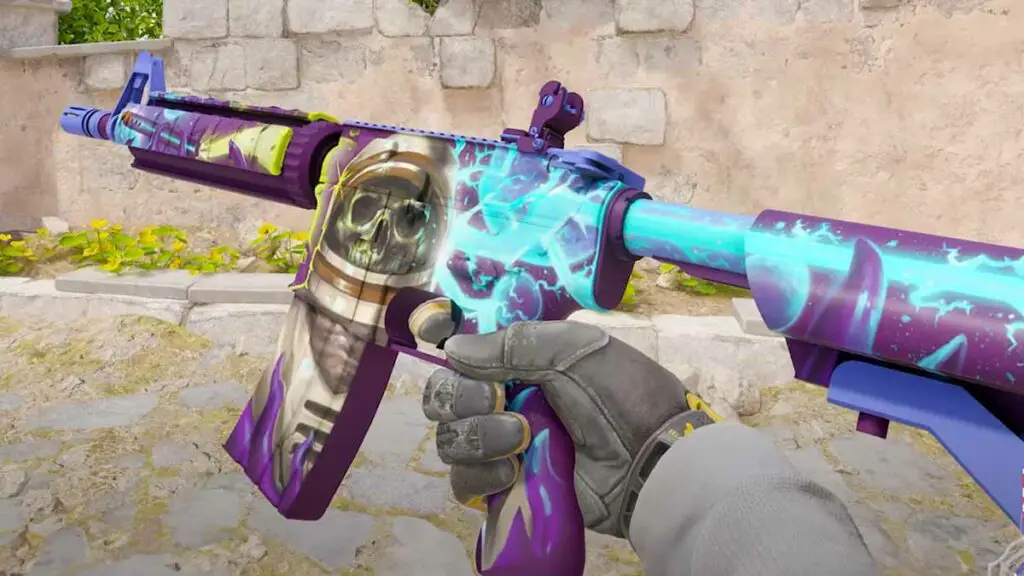There are several methods available for acquiring skins in CS2, each with its own set of advantages. However, let’s delve into the world of skin trading and explore why it’s a preferred method. Before diving in, it’s crucial to familiarize ourselves with essential information about scams and learn tips on how to avoid them. Let’s embark on this intriguing journey together!
What is Skin Trading in CS2?
As evident from its name, skin trading involves exchanging in-game cosmetic items, known as skins, with other players. Regarding how to trade CS2 skins, players can initiate a trade by sending trade offers to each other, suggesting an exchange of skins or other in-game items. Upon receiving a trade offer, players can negotiate the terms of the trade, discussing which skins or items they are willing to exchange. Negotiations may revolve around factors such as the value, rarity, or personal preferences of the items being traded. Once an agreement is reached between the players or traders, the trade can be finalized. This typically entails confirming the trade offer and accepting the exchange of items. Subsequently, the traded skins are directly transferred between the players’ inventories.
Where to Trade Skins?
There are two main channels that you can use to trade your skins. Although the process described above does not change for these methods, each of them has its distinct characteristics that you better be familiar with.
Steam Trading
Operated by Valve, Steam Trading stands out as an official feature, offering players a secure and reliable platform to exchange in-game items directly with other users. Through Steam Trading, players can seamlessly negotiate and finalize trades, allowing them to expand their inventory of CS2 skins and other in-game items easily. This official status ensures a level of trust and legitimacy, providing players with peace of mind during transactions.
Third-Party Trading Websites
Third-party trading websites are external platforms that facilitate the buying, selling, and trading of CS2 skins. These platforms typically operate independently of official game developers like Valve, often offering additional features such as price tracking, community forums, and trade verification systems. Now, let’s explore the advantages of using third-party trading platforms:
Expanded Options: Third-party trading websites offer a broader selection of skins compared to official channels like the Steam Market.
Competitive Pricing: Prices on third-party platforms may vary and sometimes offer better deals compared to the Steam Market.
Specialized Services: Some third-party websites specialize in specific aspects of trading, such as high-value item exchanges.
Common Scams and Tips for Safe Trading
Safety is paramount in trading, whether it’s through Steam trading or utilizing services provided by third-party platforms. Here, we outline common scam and fraud scenarios you may encounter, along with several tips on how to avoid them:
Scam Cases When Trading CS2 Skins
Fake Middleman Scam: In this scheme, a scammer poses as a trusted middleman to facilitate a trade between two parties. However, once the items are transferred to the fake middleman, they disappear with the items, leaving both traders at a loss.
Item Switch Scam: Scammers may attempt to trick traders by substituting valuable items with lower-value or counterfeit ones during a trade. This deception often involves quick item swapping or manipulation to deceive the victim.
Phishing Scams: Phishing scams involve luring victims to fake websites or login pages designed to mimic legitimate trading platforms or Steam login screens. Unsuspecting users may unknowingly provide their login credentials, allowing scammers to hijack their accounts and steal their items.
Impersonation Scam: Scammers may impersonate trusted traders, popular streamers, or Valve employees to gain the trust of their victims. Using fake profiles or impersonation tactics, they deceive traders into handing over their valuable items under pretenses.
How to Deal with Them?
Verify Trading Partners: Always double-check the identity and reputation of your trading partners before engaging in any transactions. Look for trusted users with positive feedback or reputation scores on trading platforms.
Use Official Channels: Whenever possible, conduct trades through official platforms such as Steam Trading or reputable third-party websites with strong security measures in place.
Beware of Impersonators: Be cautious of users impersonating well-known traders, streamers, or Valve employees. Verify their identities through official channels or direct communication to prevent falling victim to impersonation scams.
Verify Items Before Trading: Take the time to thoroughly inspect items and verify their authenticity before finalizing any trades. Ensure that the items offered match their descriptions and values to avoid falling victim to item switch scams.
Enable Two-Factor Authentication: Secure your trading accounts and digital assets by enabling two-factor authentication (2FA) wherever possible. This additional layer of security helps protect against unauthorized access and account theft.
Why You Should Trade?
Trading in CS2 offers a plethora of advantages over other methods of obtaining skins. Let’s explore how trading can benefit you.
Cost-Effectiveness
Trading presents a thrifty avenue to obtain coveted skins, leveraging negotiations based on item value instead of direct purchases. This strategy can lead to significant savings compared to outright buying, maximizing the value of players’ inventories.
Getting Rid of Unwanted Skins
Trading enables players to offload skins they no longer desire or need, freeing up inventory space and decluttering their collection. This process allows players to streamline their inventory and focus on acquiring skins that better suit their preferences.
Control Over Acquisition
Through trading, players exert control over what they receive in exchange for their skins, unlike other methods where outcomes are dictated by chance or predetermined factors. This level of control empowers players to actively pursue specific skins or items, ensuring that their trades align with their preferences and goals.
Wrapping It Up
Here we are, armed with knowledge about how trading CS2 skins works, the methods involved, the scams to watch out for, and how to avoid them. But you know what’s even better than reading about it? Getting out there and practicing it yourself. So, go ahead, dive into the trading scene, and may your trades be both successful and profitable!
